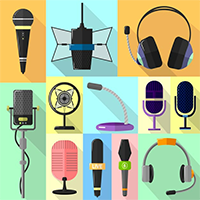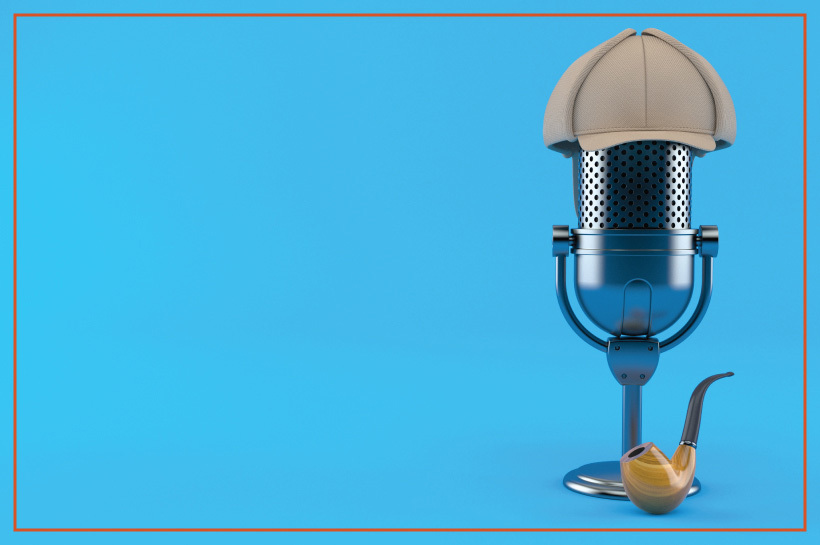Audiobook Marketing, Blog, Podcast, Podcasting, Video, Vocal Leadership, Voice
Hidden Mysteries Behind Microphones and Recording Tips for your Podcast
In this quick video, I share with you some mysteries behind microphones and give you some recording tips to improve your podcast sound quality
Tina Dietz
Hi guys, it's Tina Dietz from Twin Flames Studios, and I wanted to do a really quick video for you on microphone technique, because I hear microphone issues constantly—particularly on new podcasts—but even on longstanding podcasts.
And there's a few things that are very small that you need to be sure that you're doing with your microphone.So, first of all, this is a Yeti. Yeti is one of the most popular microphones on the market. A lot of people have one. I've been using one for years. Even though I've got other ones floating around, I do come back to the Yeti because it's familiar and lovely.One of the biggest issues with the Yeti people don't know is that it is a side presentation microphone—you don't speak into the top of the Yeti, you talk into the side of it. The other thing that happens a lot with the Yeti, as well as many other microphones, is you may have what's called the gain adjusted wrong. Gain is sometimes a button or dial on the microphone; sometimes it's in the software. The gain has to do with how much volume, or how much that your microphone is taking in. And you want to have that generally set about halfway. Not too low, not too high. Sometimes you have to experiment with it.On a microphone like the Yeti there's also different settings on the back—read the directions. Usually, for podcasting, you use the cardioid, which is the little heart symbol on the back. There's different settings on the Yeti because it is an omnidirectional microphone—you can have a bunch of people sitting around it to get sound.This is in contrast to a top presentation microphone, which—if you have a microphone that looks anything like this—and most microphones are a top presentation microphone. So, a microphone like this—this is a Samson—you would speak into the top of it, not the side of it. So, one of the biggest issues of Yeti—the sound isn't here; it's here. So, make sure you're doing it right.The other thing is, are you close enough to the mic? When we're on video like this, I'm sitting back kind of far from the microphone, and you know, you might be getting a sound. If I'm recording a podcast, I don't want to be that far away. I'm going to take a hang loose sign; I am going to put my pinky finger on the microphone; I'm going to put my thumb on my lip. And that is as far away as I should be from the microphone.If you want to create an even more intimate sound as long as you don't get too loud—because it'll pop your sound waves—you can even get in a little bit closer. And you can probably hear in the sound quality that there is a difference here when you get right up on the mic.
If you have a lot of popping and sibilance—you'll hear that right there—on your microphone, you want to make sure you do have a guard on it like this—a foam one or a screen one. They will help with the sibilance; we can also do some in post-production.And I'm also speaking in a room that is quite big—high ceiling, all of that. I'm going to get a lot of room noise. I'm going to get a lot of reverb. So, when you are recording, think about recording either in a smaller space with soft cloth or, you know, acoustic tiles on your walls. Record in your walk-in-closet—it's a great space to do recording. Just don't use video.And for God's sake, stop using Zoom for your podcasts. Even as a producer, I can tell you we have used Zoom for our podcasts in the past. We have stopped doing it. Because all of the changes in the software of the platform, they are over-compressing the sound quality. We're not getting good quality out of Zoom anymore. So consider using a podcast platform like Squadcast.fm—that's the one we use for our clients, Squadcast.fm. That is not a paid plug. It's a really easy to use format. There are a bunch of other ones out there as well, that are going to be better than Zoom.Audio and video—very different. We'll talk about that in another video. But I wanted to talk with you—since I'm seeing so many podcasts launching here in 2021—about some quick microphone techniques. These are very, very basic. There's a lot more we can go into, but if that's helpful to you—I really hope it is and hopefully that'll improve a little bit of your sound quality on your new podcast.Talk to you soon.
Want to learn more about
microphone and recording tips for your podcast?

Create a Professional and Profitable Audiobook!
The Insiders Guide to Audiobook Production gives you the inside track to create a high-quality and effective audiobook and reach a much larger new audience.
Thank you!
Please check your inbox for your email.
If you don't see anything in a few minutes, please check your spam folder.

